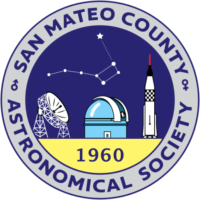Greetings to the Society,
We are still eagerly awaiting the once-in-a-lifetime event of nova T Coronae Borealis, which erupts spectacularly every 80 years. Astronomers currently predict about a 70% chance that T Corona Borealis will go nova by September and a 95% chance that it will occur by the end of the year. This nova is expected to be the brightest one seen on Earth since 1975. Additionally, Comet C/2023 A3 is currently visible through telescopes (I have gotten some shots of it myself) and will pass perihelion at a distance of 0.39 AU on 27 September 2024, when it could become visible to the naked eye through October. So, chances are good for a remarkable September for all sky watchers.
Board Elections: A Voting Reminder
We are in the final stages of electing new board officers for 2024-25. To participate in the vote, you must be a dues paying member. Nominations have closed, and online voting for the SMCAS Officers and Board members for the 2024-25 term is now open. Contact Marion Weiler for more information. Voting will close at 6 p.m. on August 3 during our SMCAS annual meeting and Star-B-Que at Crestview Park in San Carlos, where in-person votes may also be cast.
Star-B-Que Event
Star-B-Que is a family-friendly event. Bring the kids, and arrive and leave at your convenience. Our gathering will be a potluck BBQ, with board members providing burgers, veggie burgers, and Polish sausages. Please see the invitation sent to SMCASnews group for more details or in the EH.
Astronomical Events and Society Updates
The Perseids annual meteor showers promise to be especially spectacular this year, but you’ll need to go to a dark sky location to truly appreciate it. The shower peaks on the night of August 11-12. Just two days after the Perseids, Jupiter and Mars will be in conjunction in the sky as seen from Earth after 1:30 a.m. on August 14. This will be the closest planetary alignment of 2024.
As September arrives, so does the start of our general meetings at the College of San Mateo Planetarium. General meetings and socials start at 7 p.m. in Room 110 in the ISC Building (36) and Speaker Presentations start at 8 p.m. in the Planetarium or a nearby lecture room. Our first meeting of the fall on September 6 at 8 p.m. will feature an exciting presentation by Shannah Withrow on “The Future of Mars Helicopters.”
The Harvest full moon will undergo a minor partial lunar eclipse on September 17. The moon will graze the Earth’s dark shadow from 7:12 p.m. to 8:16 p.m. At its peak at 7:44 p.m., only 8.7% of the moon will be eclipsed, appearing as a small dent or tiny scallop taken out of the top of the moon.
In a disappointing turn of events, NASA has canceled $450-million VIPER (Volatiles Investigating Polar Exploration Rover) mission, which aimed to drill for ice on the Moon. This is particularly saddening as Dr. Kimberly Ennico-Smith (NASA) had previously shared insights about this mission with our Society, and many of us were excited about the potential discoveries.
Looking Forward to Clear Skies
We’re all hoping for clear skies in the months ahead. Perfect stargazing conditions would be the icing on the cake for a society as passionate about astronomy as ours.
Here’s to the end of summer, filled with celestial wonders and community achievements.
From Alcatraz, here is to Clear skies and happy viewing!,

Michael Cooke
President, San Mateo County Astronomical Society
